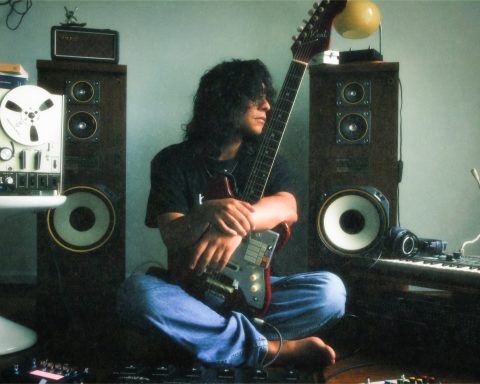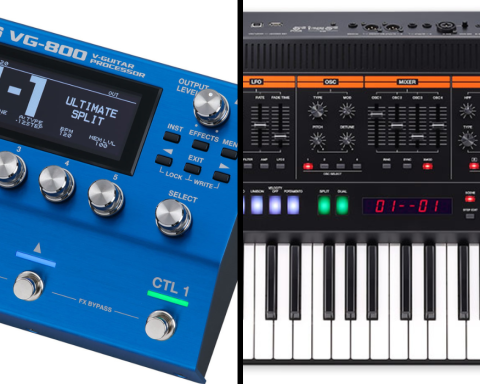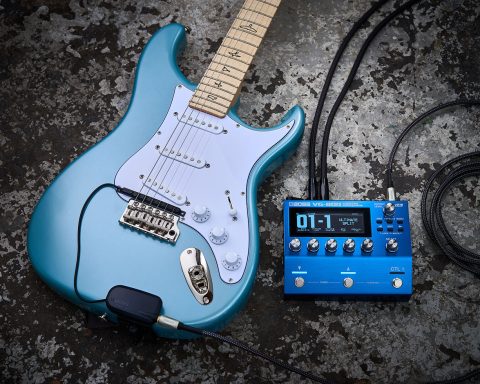Since the 1970s, the guitar synthesizer ecosystem has been on quite a journey. From the guitar-loaded GR-500 to the inception of MIDI and the ZEN-Core-powered GM-800, the evolution of the guitar synthesizer has been anything but static. Indeed, guitar synthesis offers powerful sound creation tools accessible to creators and artists across styles and genres. Let’s explore the evolution of the otherworldy guitar synthesizer.
1977: Roland Enters the Guitar Synth Game with the GR-500
Roland first broke into the guitar synthesizer scene in the Class of 1977 with the GR-500 system. The GR-500 system was pioneering and innovative but was also pricey and required dedicated Roland gear (the GS-500 guitar, a 24-pin cable, etc.). However, the GR-500 also had a killer feature—it was polyphonic.
Early adopters like Steve Hackett, Pat Metheny, and Andy Summers made compelling music with guitar synths. Still, the general guitar community was slow to follow. Indeed, different manufacturers devised their own synth interfaces. The absence of a standardized format meant some musicians dragged their feet before committing to a specific brand or device.
"Early adopters like Steve Hackett, Pat Metheny, and Andy Summers made compelling music with guitar synths."
1979: GR-300 Raises the Bar
The analog GR-300 quickly followed the GR-500 and promptly raised the bar. It offered more usable and stable effects supporting guitar techniques like hammering. More accurate tracking was also a big step up from the debut GR-500.
1980: Exploring New Territory with the GR-100
Not a guitar synthesizer by name, the GR-100 is a lesser-known release from Roland. It featured an internal hex-fuzz circuit and six low-pass filters (one for each string) combined with onboard chorus and vibrato. Its unique electronic circuit created an entirely new sound effect previously impossible with earlier electric guitar models.
1983: MIDI—One Language for All
Roland knew that a lack of standardization would hamper the industry and made it their mission to develop a simple and inexpensive “language.” This native tongue would allow communication between electronic gear, regardless of manufacturer. Dave Smith and Chet Wood of Sequential Circuits eventually signed on for the project.
Basing the tech on Roland’s Digital Control Bus, they unveiled the concept for a “universal synthesizer interface.” They did so in a paper presented at the October 1981 Audio Engineering Society (AES) show. Next, there were modifications by Roland, Sequential Circuits, Korg, Kawai, Yamaha, and others. Finally, they published the standard in 1983. It was, of course, “MIDI” (Musical Instrument Digital Interface).
In 1984, Roland’s GR-700 became the company’s first guitar synth equipped with MIDI, which allowed players to control an external MIDI synth of any brand. However, players still needed a Roland-manufactured guitar to unleash the magic.
"The introduction of MIDI and relatively inexpensive CPU availability ushered in a new era of electronic sound creation."
1985: GR-700 Sparks a Rise in Popularity
Somewhat a turning point for guitar synthesizer technology, the GR-700 was the pinnacle of early guitar synthesizer technology. The introduction of MIDI and relatively inexpensive CPU availability ushered in a new era of electronic sound creation. The GR-700 and its sound-creation capabilities were quickly popular with Robert Fripp, Jimmy Page, and Andy Summers, all fans of guitar synthesizer technology.
1986: Take a Drive with the GK-1
A couple of years later, Roland introduced the GK-1 Synthesizer Driver. It allowed any guitar to control a Roland guitar synth. Players could access the sounds and capabilities of any MIDI synthesizer by using those units’ MIDI output.
MIDI guitar synths opened the door to freedom for guitarists frustrated by the keyboard-dominated nature of ’80s pop. Of course, playing a guitar synth meant you were joining the club rather than fighting the power. Some other guitarists did so with conventional amps and towering racks full of effects, MIDI and otherwise.
"MIDI guitar synths opened the door to freedom for guitarists frustrated by the keyboard-dominated nature of ’80s pop."
Keyboard Jealousy
Guitarists watched keyboardists access massive textures by linking synths together via MIDI. What guitarist wouldn’t want to craft tonal mountain ranges using several sound modules? Plus, you could split your guitar signal between the synth array and a tube amp. This meant blending tonal sources could result in a gigantic sound.
There was also the “weird factor” at play. Steve Hackett complained fans greeted his forays into keyboard sounds for the guitar with unkind comments. “Why don’t you just get another keyboard player and stick to guitar?”
But MIDI guitar synths weren’t always about hijacking synth sounds with strings. At the same time, technological wizards were busy developing MIDI controllers to interact with keyboards and computers. This included percussion, wind instruments—even bodysuits. Forward-thinking guitarists used these new synth textures to morph guitar into something unique and wonderful.
1994: GR-09—Progressive Players
Guitar Player interviewed Reeves Gabrels in June 1997. At that point, he’d abandoned conventional amps and pedals with David Bowie. Instead, Gabrels linked a Roland VG-8 V-Guitar System and a Roland GR-09 Guitar Synthesizer to craft challenging sounds.
“I always hated synthesis,” Gabrels told GP’s Joe Gore. “But I guess you become the thing you loathe. I use the synth sounds from the GR-09 for coloration. I prefer the randomness of fusing synths with the VG-8’s digital sounds.”
Like Gabrels, those experimenting with guitar synths comprise an eclectic, progressive list. They include Vernon Reid, Adrian Belew, Matt Bellamy, Alex Lifeson, Robert Fripp, Bill Frisell, and David Gilmour.
2011: GR-55—A New Era
The Roland GR-55 revolutionized guitar synthesis with new features for any guitar processor. Newly developed pitch-detection technology made it the fastest and most accurate guitar synthesizer. This was a ground-breaking new era as guitar synthesizer technology joined guitar processing. Together, combined technologies allow a user to create unique sounds.
2014: The GP-10 Blend
What’s so special about the GP-10? With a Roland GK-compatible pickup on your guitar, the GP-10 lets you transform your sound into numerous classic electric and acoustic guitar types, basses, and even analog-modeled synths, including the legendary Roland GR-300.
The versatile GP-10 rose to popularity thanks to its functions as a full-featured multi-effects processor for both GK and standard pickups, providing a massive selection of COSM amps and effects for live playing and studio recording.
"The versatile GP-10 rose to popularity thanks to its functions as a full-featured multi-effects processor for GK and standard pickups."
2015: Meet the BOSS: The SY-300
Roland’s history with guitar-synth development and manufacturing informed BOSS releases. These culminated in the 2015 debut of the SY-300 Guitar Synthesizer. Unlike previous Roland guitar synths, the SY-300 does not need a divided or hexaphonic pickup. The player plugs a standard 1/4″ guitar cord into the device to unlock a vast landscape of timbres. That feature alone was a boon for those not wishing to futz with adding complexity to their guitar rigs.
"The SY-1 Synthesizer compact pedal meant incorporating synth sounds into a setup was no different than adding a distortion stompbox to a pedalboard."
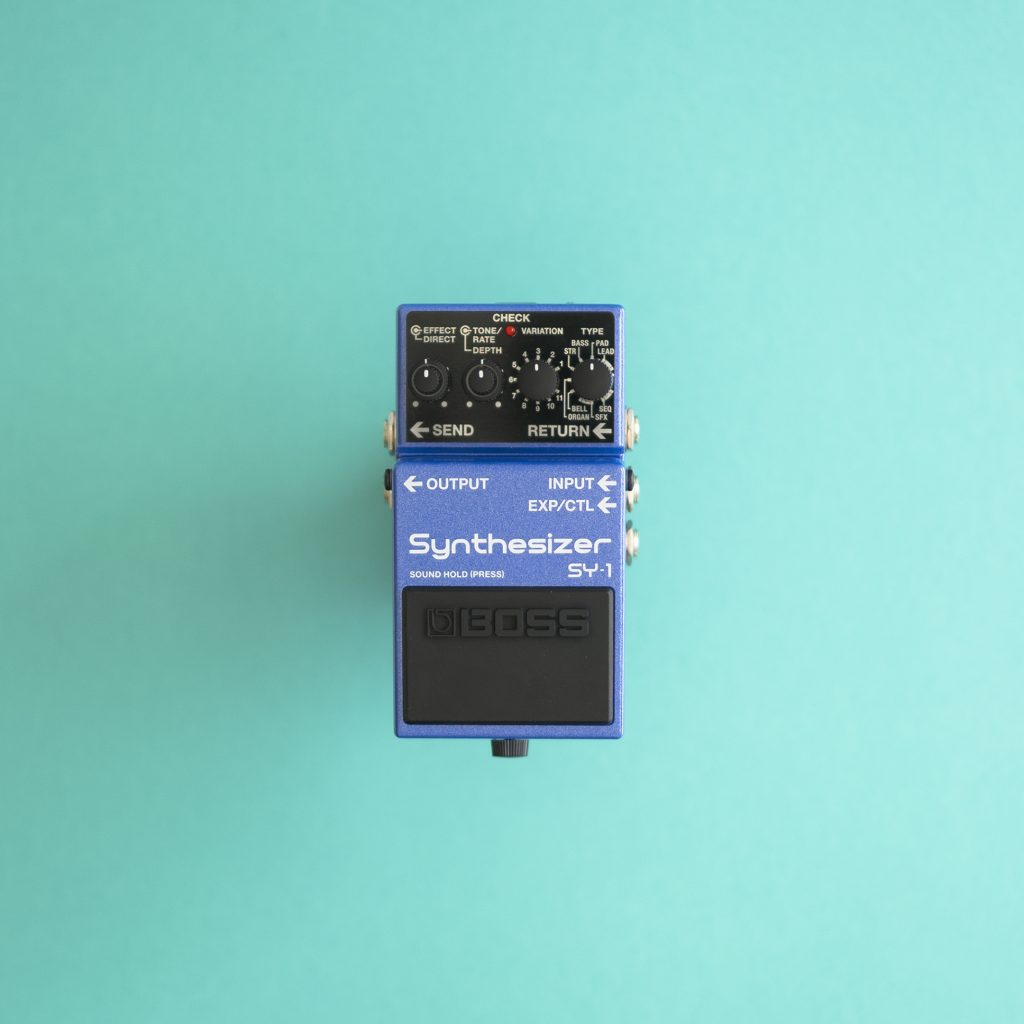
2019: SY-1 Enters the Fold
In 2019, BOSS released its first compact synthesizer pedal, the SY-1. The distinct difference is that the SY-1 is a traditional plug-and-play compact pedal instead of a fully-fledged guitar synthesizer system. While it doesn’t offer the conventional guitar synthesizer modeling and GK-pickup functionality, it does feature razor-sharp tracking and easy operation for those looking for a gateway into synthesizer sounds and easy pedalboard integration.
2020: SY-1000 / Pickup Game
But tech never stands still. 2020 saw the guitar-synth pendulum swing back to a GK 13-pin pickup for the BOSS SY-1000 Guitar Synthesizer. It delivered improved tracking and less latency. Also, the device includes a 1/4″ input for blending guitar/bass and synth sounds.
It’s no secret that guitarists obsess over their tone. For some, that obsession drives them to achieve the fattest, warmest sounds from a conventional amp and guitar. While that’s an admirable endeavor, there’s also a bit of “ho-hum” in the sonic equation. Been there, done that.
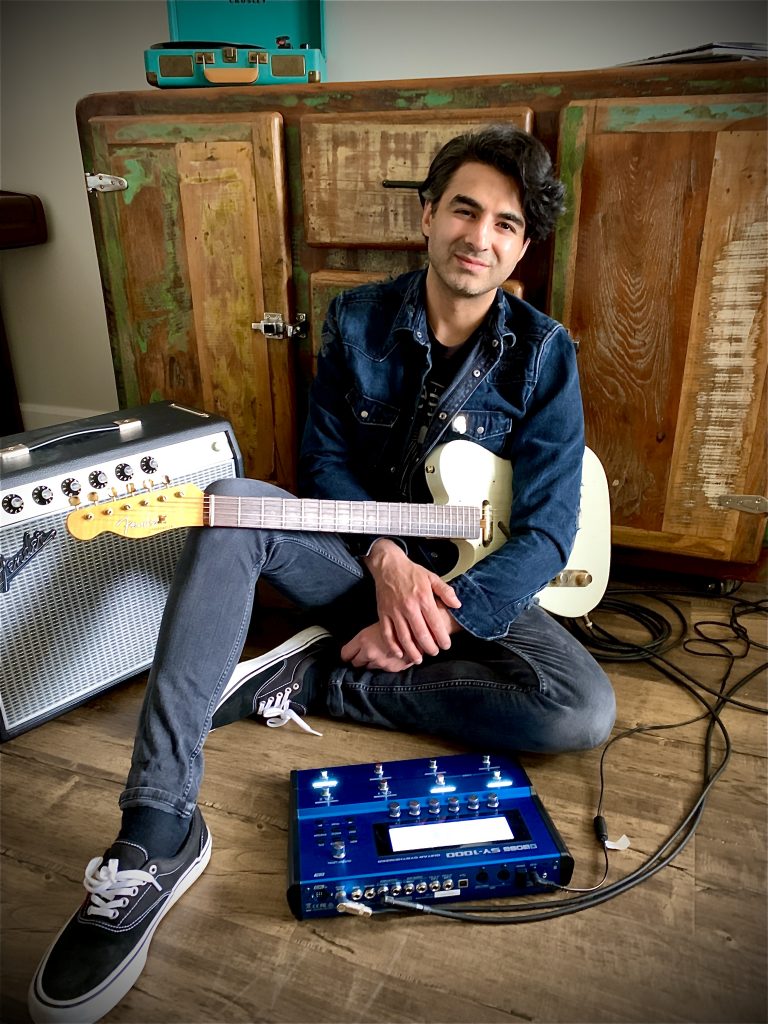
"The SY-1000 lets me do things that traditional pedals can’t do and opens up a whole new world of sonic possibilities."
Zubin Thakkar
Crafting Unique Tones
But those players who seek unique vistas should look beyond the wildest boutique analog stompbox. Instead, dive into synth-guitar textures. Many current guitar synths allow you to blend straight guitar and synth tones. They even provide effects loops for combining your pedalboard seamlessly into the mix.
For Zubin Thakkar, Musical Director for superstar Shawn Mendes, his SY-1000 is essential in recreating textures from Mendes’ releases. “The role of a guitarist in modern pop music is constantly changing, and the need for a huge palette of sounds and effects is so important,” Thakkar says. “The SY-1000 lets me do things that traditional pedals can’t do and opens up a whole new world of sonic possibilities.”
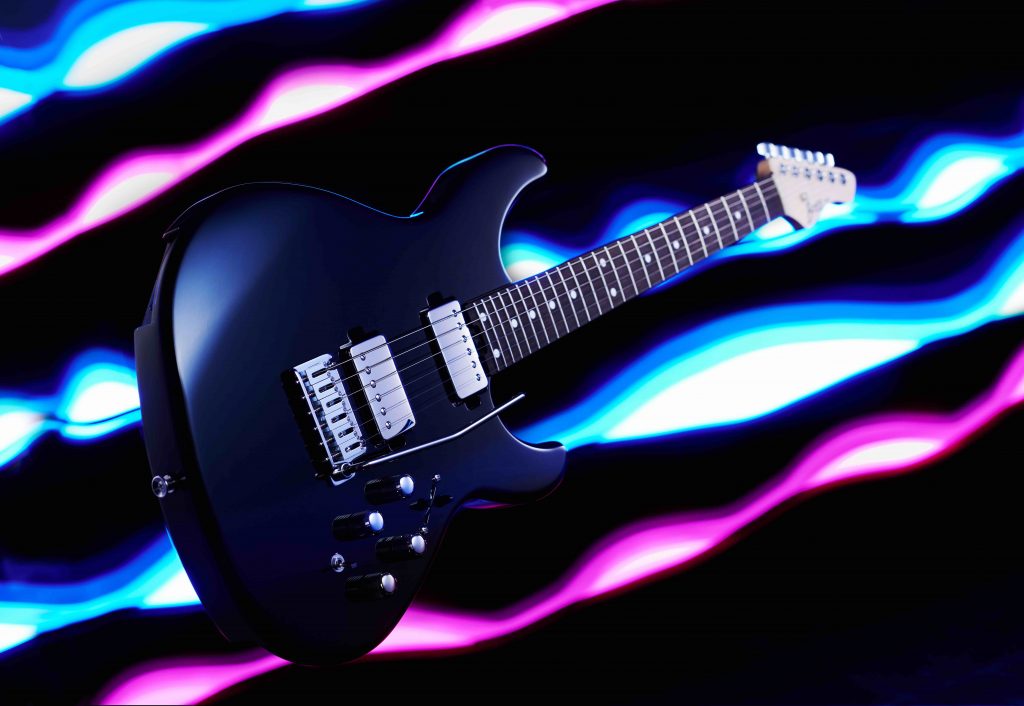
Into the Future
BOSS continues to innovate in the world of guitar synthesis systems. With the EURUS GS-1, BOSS brings its advanced synth engine into a high-quality electric guitar. The instrument allows guitarists to access a range of synth sounds as easily as using an overdrive. The EURUS GS-1 builds on BOSS technology while breathing fresh air into the guitar synth conversation.
EURUS GS-1 tones range from searing leads and analog brass to organs and bass synths. All respond naturally to playing dynamics, vibrato, and string bending. There are sounds to fit any genre, from floor-shaking EDM basses to dreamy ambient pads and leads. As described by BOSS when it debuted, the EURUS GS-1 “presents a bold new creative path for adventurous sonic explorers.”
"The GM-800 bridges the gap between traditional and pedal units with powerful modern cloud-based applications and creative freedom."
2023: A New Serial GK System
2023 ushered in a revolutionary new wave of guitar synthesizer inspiration, and the ZEN-Core-powered GM-800 bridges the gap between traditional and pedal units with powerful modern cloud-based applications and creative freedom. The new Serial GK system moves away from the conventional 13-pin connectivity and a more advanced serial GK connection.
The GM-800 is a dedicated guitar synthesizer sound module. Its mighty sonic creation power propel the instrument far ahead of the pack. Ultimately, the future of guitar synthesizers remains unwritten, awaiting the next technological breakthrough to inspire new players.




